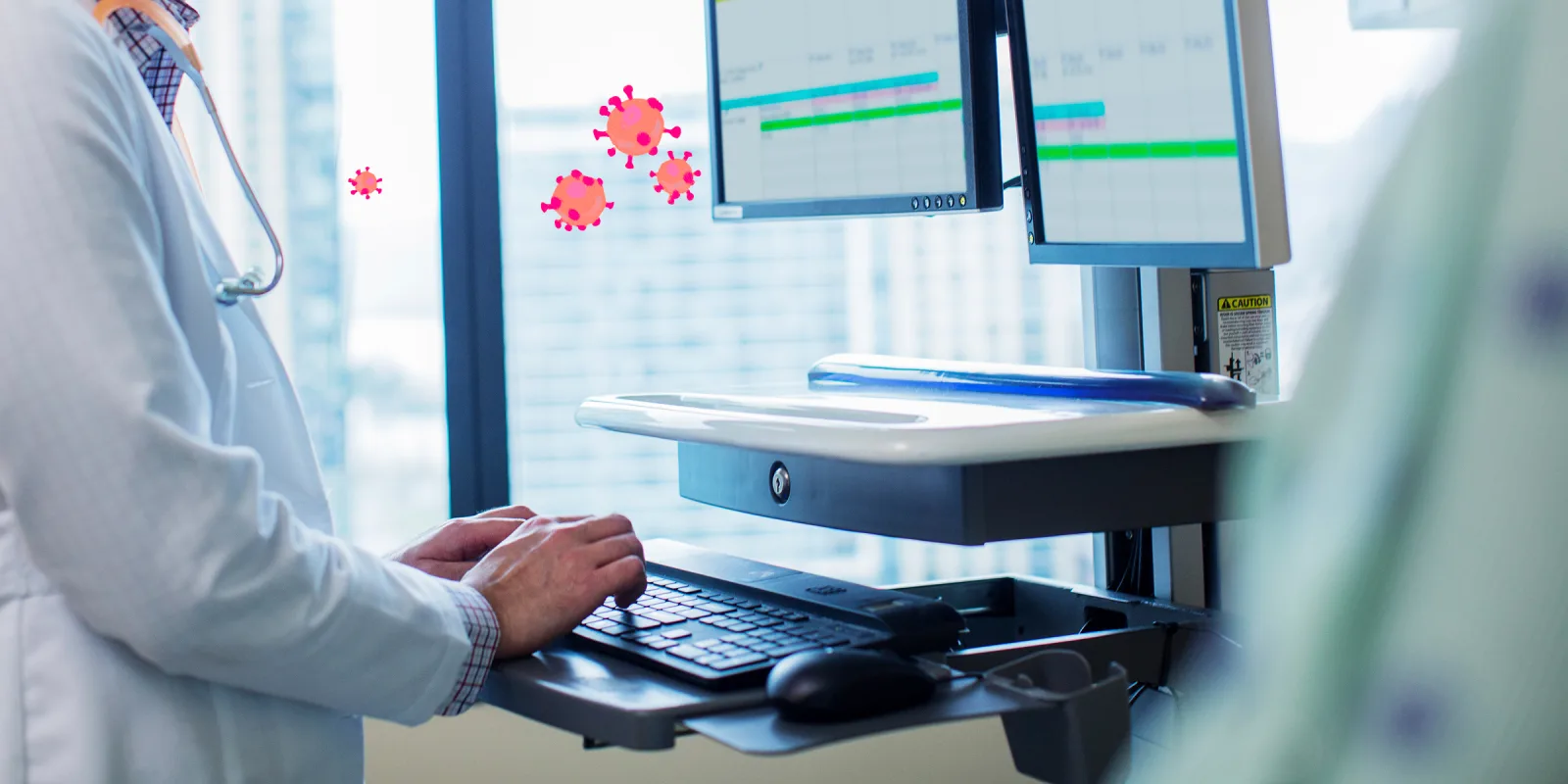Last year, our hospital switched to a new, advanced EMR system. The transition happened right before the COVID-19 pandemic began in the United States, in early February 2020. For many departments, it involved switching from one EMR to another; for others, it was the first time an EMR had been used (paper charts had been the previous norm). A little over a year later, we look back now at some of the advantages, disadvantages, and opportunities presented by our EMR transition, all through the lens of the COVID-19 pandemic.
Though the timing of the switch was non-ideal because of the pandemic, it also was advantageous that the hospital implemented one of the world’s most advanced EMRs at a time when medicine was facing unprecedented challenges. The hospital’s new EMR system allowed for direct communication between clinicians throughout the hospital. The pandemic required new collaboration across specialties, and the new system helped, providing previously absent efficiency in communication. Further, the new EMR had purely practical applications: it allowed for cloud-based storage of patient information that does not require maintenance or rely on the ability of the reader to interpret handwriting. During the pandemic, especially, it was very advantageous because it allowed for better hygiene and quicker access to information.
In the same vein, the advanced EMR system allows for organized storage of complex and lengthy medical histories. During the pandemic, it was very beneficial in reducing the time it took to understand a patient’s story, especially for those patients who were not able to communicate. Even now, post-pandemic peak, this function continues to be one of the EMR system’s most valuable. Now and into the future, it will continue to help clinicians understand the intricacies of a patient’s illness (including clinicians treating patients who are still suffering the aftereffects of COVID-19). And, of course, implementing an advanced EMR system allowed clinicians in many different specialties to continue to provide care remotely via telemedicine visits. Indeed, the pandemic both accelerated the development of telemedicine, and changed the course of virtual medicine forever.
All of that said, there were also many challenges in transitioning from one system to another during a global crisis. One of the biggest challenges with advanced EMR systems is information overload. EMRs store notes from different types of clinicians and administrators, and save every significant or insignificant lab result (for example). Combing through such a high volume of information to find an important piece of history can be very time consuming, especially in times of medical emergency. The EMR also allows for fewer personal interactions with patients. Most EMR systems are not currently designed to allow the clinician full interaction with the patient because the clinician has to pay close attention to the screen to ensure they are correctly filling out the chart. Additionally, the manner in which EMRs have been installed in patient rooms is not conducive to a good interaction as the clinician often ends up with their back to the patient while they type. The COVID-19 pandemic also highlighted the fact that while many EMR systems are very good, they are still not streamlined enough to be considered user-friendly. It can take many clicks and many bouts of repetition to understand what is required to close a patient visit or order a medication. In these scenarios, it sometimes feels like the EMR is dictating the show, and the clinician must follow its direction rather than the other way around.
COVID-19 provided a unique lens for determining the advantages, disadvantages, and opportunities created by the implementation of an advanced EMR system at a tertiary care medical center. But major opportunities exist to improve. It is not unreasonable to anticipate EMRs that are as user-friendly as smartphones or computers, and that allow for better clinician-patient communication. In the new post-COVID-19 era, the power of the EMR can be harnessed to create more telemedicine platforms that increase access to care. Current platforms can also be improved and streamlined to encourage patient usage and to maximize benefits.
The opportunities to expand medicine itself through the use of EMR systems are endless. The storage of vast amounts of information on different disease states, patient outcomes, costs of care, and revenue in an organized manner presages a new era of unbounded discovery and the emergence of a new era in modern medicine. In this rapidly approaching future, technology and science can combine to provide better care than ever before.
Did EMR systems augment or detract from your interactions with patients in 2020? Share your positive experiences and horror stories in the comments.
Dr. Karani is an ophthalmology resident at the Columbia University Medical Center in New York City. She completed her MD/MPH at Johns Hopkins University School of Medicine and is passionate about taking care of patients and understanding their stories, solving public health issues affecting underserved populations, and writing about her experiences. She is a 2020–2021 Doximity Op-Med Fellow.







